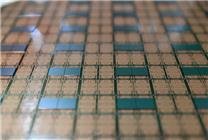AMD Unveils Zen 7 Architecture: Next-Gen AI-Driven x86 Processor
Summary:
- AMD announces its Zen 6 and Zen 7 architectures, with Zen 7 focusing on AI-native processing.
- Zen 7 will feature the innovative Matrix Engine and AI Data Formats, marking a significant leap in CPU technology.
- The release window for Zen 7 is projected between 2027 and 2028, with its first application in EPYC’s Verano series.
On November 12, AMD revealed its latest architectural roadmap during the 2025 Financial Analyst Day (FAD 2025), solidifying its commitment to advancing CPU technology with the introduction of the Zen 6 and Zen 7 architectures. This announcement not only underscores AMD’s progress in processor design but also signifies a strategic shift towards artificial intelligence (AI) capabilities.
Zen 6: The Path to Performance
The upcoming Zen 6 architecture is set to leverage TSMC’s cutting-edge 2nm process, prioritizing performance enhancements and energy efficiency. With plans for its release in 2026, Zen 6 promises to push the boundaries of what is possible in computing, catering to both consumer and enterprise markets.
The Zen 7 Breakthrough
A Leap into AI
However, it is Zen 7 that steals the spotlight. AMD’s roadmap indicates that Zen 7 will utilize a yet-to-be-named "Future Node" process technology, positioned between TSMC’s N2P and N1.8 nodes. The centerpiece of the Zen 7 architecture is the revolutionary introduction of the Matrix Engine, designed specifically for matrix operations, alongside support for new AI Data Formats.
The incorporation of these features means that Zen 7 will be the first x86 architecture to include a dedicated AI acceleration engine. This pivotal advancement propels the Zen platform into the realm of AI-native processing, a strategic move that aligns with current technological trends.
Shifting Focus to AI Acceleration
AMD’s approach illustrates a broader strategic focus; the company is not merely optimizing for raw performance or power consumption, where it currently holds an advantage over competitors like Intel. Instead, AMD is positioning AI acceleration as a core pillar for its next generation of CPUs. This pivot indicates a commitment to enhancing capabilities that meet the increasing demand for AI-driven applications in both personal computing and data center environments.
As AI becomes integral to various sectors, this architectural shift highlights AMD’s ambition to lead in the Artificial Intelligence for PCs (AIPC) ecosystem. This focus on AI is expected to resonate across multiple industries, showcasing the versatility and future-proofing inherent in the Zen 7 architecture.
Market Projections
Speculation within industry circles suggests that Zen 7 will debut sometime between 2027 and 2028, with the first processors based on this architecture likely to be featured in the EPYC Verano series of data center CPUs. This timing reflects AMD’s strive for innovation, ensuring that its future products remain at the forefront of technological advancement.
With the announcement of the Zen 7 architecture, AMD sets the stage for transformative developments in the computing landscape. The integration of AI-specific capabilities aligns with the needs of modern workloads, particularly as businesses and consumers alike increasingly adopt AI solutions.
Conclusion
As AMD forges ahead with the Zen 6 and Zen 7 architectures, it is clear that the company is not just focusing on the current landscape but is gearing up for the future. The commitment to AI-centric technologies signifies a response to an evolving market, ensuring that AMD retains its competitive edge while enabling the next wave of computing innovation. The future of processing is not just data-driven—it’s intelligent, and AMD is ready to lead the charge.
With the exciting developments on the horizon, tech enthusiasts and industry professionals alike should keep an eye on AMD as it continues to shape the future of computing.





